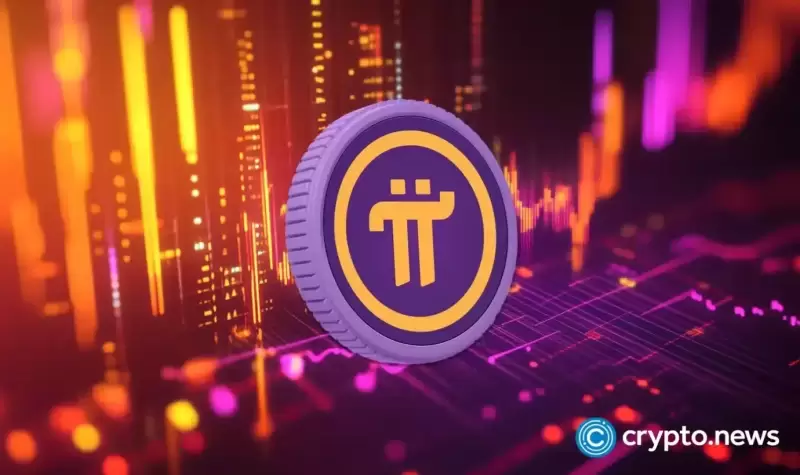 |
|
 |
|
 |
|
 |
|
 |
|
 |
|
 |
|
 |
|
 |
|
 |
|
 |
|
 |
|
 |
|
 |
|
 |
|
Cryptocurrency News Articles
How Algorand is Driving Real-World Asset (RWA) Tokenization
Apr 02, 2025 at 05:09 am
In an interview with CCN, John Woods, Chief Technology Officer (CTO) at the Algorand Foundation, discusses the blockchain's approach to real-world asset

In a recent interview with CCN, John Woods, Chief Technology Officer (CTO) at the Algorand Foundation, discussed the blockchain’s approach to real-world asset tokenization, its progress on quantum resistance, and the enhanced developer experience enabled by the building blocks in AlgoKit 3.0.
Speaking from a technical and systems-oriented perspective, Woods highlighted how Algorand is positioning itself in the blockchain space. He touched upon developments like tokenized real estate via Lofty, steps toward regulatory alignment, and upcoming integrations such as MasterCard virtual cards — allowing ALGO holders and stakers to spend assets on daily expenses. These examples showcase how the network is evolving its infrastructure and focus as it approaches 2025.
How Algorand is Driving Real-World Asset (RWA) Tokenization
For Woods, tokenizing real-world assets is a key step in bringing blockchain into the mainstream. He mentioned that while digital assets have matured, the connection between traditional and digital assets remains underdeveloped.
“We’re not yet at a place where we can take an RWA and put it in a simple, deployable package that can be used across different chains and services. That’s the gap we’re trying to close,” said Woods, highlighting Algorand’s focus on bringing real-world assets like real estate and financial products on-chain.
“The beauty of it is that we don’t need to write any code to do it,” he added.
“We can create RWA assets represented by tokens, and all of that stuff is done without writing a single line of code. So no-code assets, and that’s why Algorand is very accessible to businesses that don’t come from a blockchain background.”
One example is Lofty, which Woods described as “probably the crown jewel of RWA tokenization on Algorand.”
“Lofty is a firm that has pioneered on Algorand the idea of tokenizing real estate, which is something that’s been discussed for a long time but not yet realized on a large scale,” explained Woods.
The platform features “some hugely valuable properties,” he noted, adding that “it’s not just some shed in the middle of nowhere, there’s actually choice.”
The ability to represent real-world assets like property on-chain — as seen with Lofty — is possible “without writing a single line of code,” said Woods.
“We can create RWA assets represented by tokens, and all of that stuff is done without writing a single line of code,” he explained. “So no-code assets, and that’s why Algorand is very accessible to businesses that don’t come from a blockchain background.”
Use Cases for Tokenized RWAs: From Real Estate to Regional Indexes
The appeal of tokenized real-world assets extends beyond real estate, suggested Woods, who explained that “there’s a number of different things that are ongoing, including crops and other things like that.”
These tokenized assets could be applied broadly, he described, explaining how “you can tokenize property that you own and allow that not just to be sold to, say, one participant, one hop away, but allow it to be traded or used as liquidity in other contexts” such as “loans or insurance and many other contexts.”
Speaking on future possibilities, Woods added, “How wonderful would it be to be able to tokenize one’s own home or a percentage of it,” and highlighted that one “could buy California, you could long California and short New York,” imagining an index model based on tokenized real estate.
For users of RWAs, an RWA trend points to a future where ownership becomes more flexible, composable, and usable whether you’re an investor, a homeowner, or someone looking to access new forms of financial utility
How AI and Native Languages Are Shaping Smart Contract Development on Algorand
As blockchain development becomes more accessible through the use of AI, Woods noted that AI tools are beginning to shape how smart contracts are written. Algorand’s choice to support widely used languages like Python and TypeScript makes it easier for developers to get started and for generative AI models to assist.
“You can essentially talk to any AI today, and it will give you answers that are good in the context of an Algorand smart contract,” said Woods.
“Unlike ecosystems such as Ethereum, which use language variants like Vyper or Solidity that resemble popular languages but differ in syntax and structure, we support actual, native Python and TypeScript.”
This approach reduces the entry barrier for developers and enhances compatibility with existing AI tools.
Algorand’s decision to support Python and TypeScript was a strategic move by Algorand, as it offers compatibility with the world’s most widely used programming languages.
Why Algorand’s Use of Native Python and TypeScript Matters in the Age of AI Development
Woods touched on the rise of “vibe coding,”
Disclaimer:info@kdj.com
The information provided is not trading advice. kdj.com does not assume any responsibility for any investments made based on the information provided in this article. Cryptocurrencies are highly volatile and it is highly recommended that you invest with caution after thorough research!
If you believe that the content used on this website infringes your copyright, please contact us immediately (info@kdj.com) and we will delete it promptly.
-

- Trump's New Global Tariff Regime Reshapes Investor Sentiment, Triggering Sharp Corrections Across Risk Assets
- Apr 04, 2025 at 03:00 am
- Market analysts say President Donald Trump's newly announced global tariff regime is already reshaping investor sentiment, triggering sharp corrections across risk assets.
-

-

-

-

-

-

-

-



























































